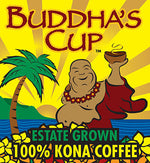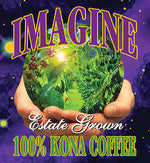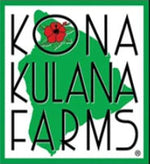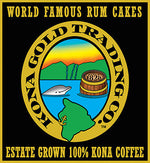Introduction to Oolong Tea

If you’ve been craving a tea as rich as its history, look no further. Oolong tea is a traditional Chinese Tea, created during the Qing Dynasty around 1644.
Made from the leaves of the Camellia Sinensis plant (Tea Plant), oolong tea is partially oxidized, meaning the leaves are exposed to oxygen to dry before being exposed to heat to stop oxidation. Oolong tea leaves are then shaped either into balls or rolled lengthwise. The leaves unroll when brewed, releasing the flavor.
Oolong tea is known for its depth and ranging flavor profile. With a diverse selection of varieties, the rich aromatic flavor might have hints of sweetness, florals, or even nuttiness. But, because it’s semi-oxidized, the tea may be strong but never as bitter as black tea.
Since its creation, oolong tea has been recognized for various health benefits, including aiding digestion and curing headaches. Recently, it’s been linked to weight loss and protection from cancers. These health benefits have sky-rocketed its popularity, and tea vendors, such as Buddha’s Cup, have begun offering oolong tea.
Sources: International Tea Masters Association, oolong.co.uk, Healthline
Varieties of Oolong Tea

Oolong tea is considered partially oxidized, but the levels of oxidation can range from 8 to 85%. With different ranges of oxidation, the teas will taste differently.
Oolong is also primarily made in different Chinese regions and Taiwan, creating regional variations in flavor, aroma, and appearance. From the mineral hints of Wuyi Mountain oolong to the creaminess of Taiwanese Formosa oolong, here’s an oolong tea that will suit your palate.
The regional and oxidation differences create different grades of oolong tea. The main three are:
1. Tieguanyin Oolong
Known for its floral aroma, particularly that of orchids, Tieguanyin oolong originates from the Fujian Province in China.
Tieguanyin tea offers a range of flavors, capturing the orchid notes while also offering tasters a nutty, roasted aftertaste.
The oxidation levels vary, creating a diversity of flavors. If the tea is lightly oxidized, it is known as jade Tieguanyin and appears like a green tea. A Tieguanyin oolong that has undergone more oxidation will have a deeper taste, often evoking notes of caramel and grain.
2. Wuyi Rock Oolong
Another oolong that originates from the Fujian Province is grown in the Wuyi Mountains.
The Wuyi rock tea is a dark and intense variety of oolong that undergoes heavy roasting over charcoal. This is one of the traditional Chinese processing methods.
The heavy roasting creates a mineral taste with roasted nutty and caramel undertones.
3. Formosa Oolong
Oolong tea coming from Taiwan (formally known as Formosa) is crafted in high mountain altitudes and low mountainous areas.
This variety offers a diversity of flavors, from delicate and floral notes to a creamy and buttery sip. Moderately oxidized, Formosa oolong offers tasters with a lingering sweetness and accents of honey.
A smoother option than heavier roasted and darker oolongs, Formosa oolong can also be infused serval times, allowing for longer life and more discovery of complex flavors.
Brewing Techniques for Oolong Tea

Because of oolong tea’s unique shape, as it brews the leaves slowly unwind and allow for multiple infusions. Upon each infusion, the flavor profile will deepen and offer a complexity missing from other teas.
At Buddha’s Cup, we want you to have the best oolong-tasting experience, so here are some things to consider when brewing:
1. Optimal Water Temperature and Steeping Times
Spending on the variety of oolong you buy, the ideal water temperature will vary, but the usual range is between 185°F to 205°F (85°C to 96°C).
For lighter, less-oxidized oolongs, you’ll want to steep the tea for about 2-3 minutes. For darker varieties, steep for 3-5 minutes.
The water temperature and steeping time can heavily influence the flavor. If your water is too hot, it may completely dilute the complex layers, while water that’s too cold won’t expose the flavors. The steeping time will increase or decrease the intensity of flavors, so it depends on your personal preference.
2. Importance of High-Quality Water and Teaware
Using filtered or spring water will enhance the purity and taste of oolong tea, evoking the classical, traditional flavors and experience.
Choosing the right teaware and preheating it can enhance the aromas and flavors, and retain the optimal brewing temperatures to allow a deepening of flavors while you drink.
Here are some suitable teaware options:
- Porcelain teapots
- Clay teapots
- Gaiwans (Chinese lidded bowls)
- Glass teapots
3. Art of Multiple Infusions
One of the hallmarks of oolong is its ability to yield multiple infusions without losing flavor. The flavor profile evolves and becomes increasingly nuanced.
As you continue to brew the same leaves, slowly increase the steeping times and temperature to ensure you are getting the deepest flavors.
Oolong Tea and Health Benefits

Oolong is a nutrient-rich tea, containing vitamins, minerals, and antioxidants that have many health benefits.
One of the most popular benefits is oolong tea’s impact on weight loss and protection against diabetes. By easing insulin resistance and lowering inflammation, oolong can help maintain normal blood sugar levels. Oolong has also been linked to enhancing enzyme inhibition and burning more calories.
Oolong also helps heart health, lowering blood pressure and decreasing the risk of heart disease.
Here are some more health benefits:
- Improving digestion
- Preventing certain cancers by stopping cell mutations
- Improving bone mineral density
- Relieving eczema
- Increasing the maintenance of brain function and memory
Shop from Buddha’s Cup collection of teas.
Source: Healthline
Oolong Tea Culture and Traditions

With an expansive history, it’s no surprise oolong tea is a highly treasured tea in both China and Taiwan. Creating and brewing oolong is a sacred cultural practice, often allowing a gateway to mindfulness.
The traditional Chinese tea ceremony is known as Gongfu Cha, which translates to “making tea with skill.” During this ceremony, special attention and preciseness are prioritized through multiple infusions in small teacups. Participants experience the full complexity of oolong’s flavor and aroma.
The Taiwanese tea ceremony also appreciated the complexity of oolong teas through multiple steepings.
Both of these practices emphasize the importance of being focused and aware while also calm and relaxed.
Source: Path of Cha
Sourcing and Authenticity of Oolong Tea

To ensure the most authentic and best-tasting oolong, it’s recommended to buy from reputable specialists who have relationships with individual farmers in China and Taiwan. These farmers create a tea that is authentic, quality-controlled, ethical, and sustainable.
Several factors influence oolong’s authenticity:
- Terroir, which is the environmental factors such as climate, altitude, and soil. Terroir will impact the taste and aroma of oolong.
- Processing methods, such as the oxidation and roasting methods will create oolong’s characteristic shape and flavors. Traditional processing methods are the most authentic.
- Factors influencing oolong tea authenticity, including terroir and processing methods.
To avoid buying counterfeit oolong, source your tea from trusted suppliers, and research the companies you are buying from. Many will have certifications or seals of authenticity. You should also evaluate the reviews and recommendations to see if other people have validated the authenticity.
Source: Serious Eats
Oolong Tea and Culinary Applications
Don’t let not enjoying tea stop you from buying oolong. You can still benefit from its rich antioxidants by incorporating it into your cooking and baking recipes.
Let’s explore some creative pairings and uses.
Savory Dishes
With such a diverse flavor profile, oolong can enhance savory dishes, adding notes of sweetness and more depth.
Marinate your chicken or pork with brewed oolong tea before grilling to allow an infusion of complexity.
Or use brewed tea as a brother base for soups, allowing you to add any mix of ingredients to create a culinary journey.
Substitute water for oolong tea in sauces or glazes to enrich your seafood and stir-fry experiences.
And while you're at it, add macadamia nuts to your savory dishes for even more nuttiness.
Desserts and Sweets
Dilute the sweetness of custards, puddings, and ice cream by infusing oolong tea during the baking process to add a subtle tea flavor.
Or, create a unique sweetness in your pastries and cookies by adding oolong tea to their batter.
And if infusion isn’t your thing, create oolong tea syrups to drizzle over fruits or desserts, like a spongy, moist rum cake.
Beverage Creations
You can still enjoy the exciting adventure of drinking oolong without explicitly making tea.
Add cooled brewed oolong with mixers (and alcohol) to create refreshing and unique cocktails and mocktails.
Blend the tea, milk, and frozen fruits to create smoothies. Or add it to just milk and create a tea latte.
There are thousands of culinary creations waiting to be made with oolong tea.
Oolong Tea: A Varied Beverage
Oolong tea's rich history, diverse varieties, and nuanced brewing techniques make it a captivating and delicious beverage.
The cultural significance and complexity of creation make enjoying a cup of oolong tea a much more enjoyable experience.
Whether enjoyed for its health benefits, cultural connections, or culinary versatility, oolong tea allows us to discover and delight in complex flavors.
Visit Buddha’s Cup and explore their wide variety of tea.
Frequently Asked Questions
What is oolong tea?
Oolong tea is a semi-oxidized tea made from the leaves of a Tea Plant, and it originated from China. Because the leaves are not fully dried, the flavor and aromas range based on the levels of oxidation. The region of production also influences the flavor profile.
What is the cultural significance of oolong tea?
Oolong tea is significant in both China and Taiwan. It often plays a role in their traditional tea ceremonies, which allow participants to enjoy the full breadth of flavors that each infusion allows. These ceremonies allow for mindfulness.
How do I brew oolong tea?
Oolong tea is brewed with normal water, like other teas, but the temperature and steeping times will vary depending on the levels of oxidation and personal preference. You can infuse oolong tea multiple times, allowing for diverse tasting experiences.
What are the health benefits of oolong tea?
Oolong tea has many health benefits, most notably helping weight loss, decreasing diabetes risk, and improving heart health.













